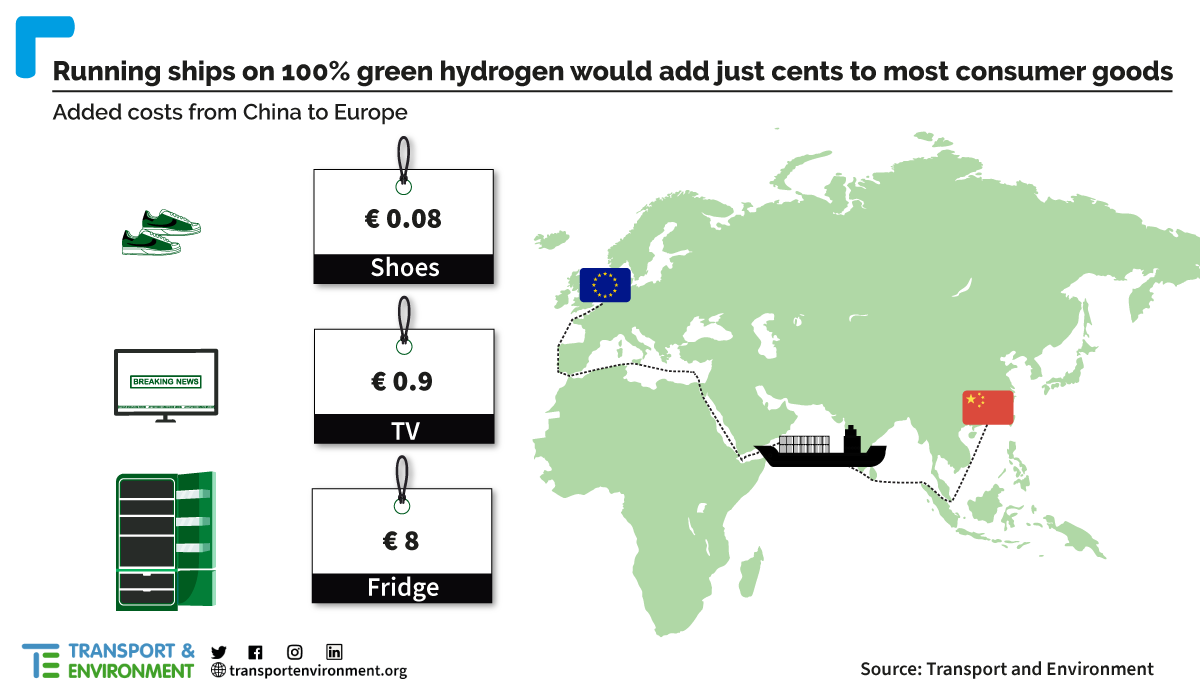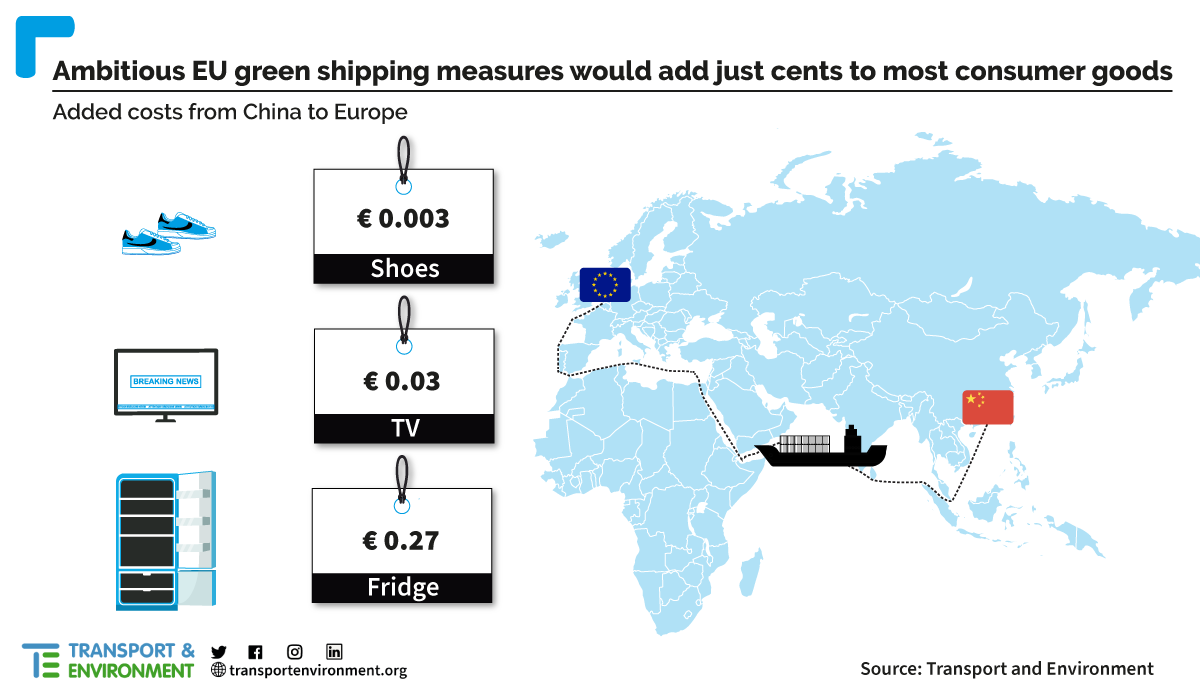Running ships entirely on green hydrogen-based fuels (e-fuels) would add less than €0.10 to the price of a pair of trainers and up to €8 for a refrigerator[1], a new study on the cost of decarbonising European shipping shows. The analysis of shipments from Shenzhen in China to Europe debunks claims by the shipping industry that ambitious measures to green the industry will be prohibitively expensive and cause exorbitant price hikes for consumers.

Faig Abbasov, shipping director at T&E: “Green shipping would add less than 10 cents to a pair of Nikes. This is a tiny price to pay for cleaning up one of the dirtiest industries on earth. In a year where shipping companies are making bigger profits than Facebook, Google, Amazon, and Netflix combined, it is right to question whether shipping companies are doing enough.”
The shipping industry is the backbone of global trade. But, to date, the industry has been slow to decarbonise and it remains one of the heaviest polluting industries in the world. A central argument against ambitious green measures is that it would push up prices for consumers.
The study shows that even in the most extreme case of a ship running on 100% green fuels, prices would not rise significantly. That is if wealthy cargo carriers were to pass on the costs to consumers. This reflects the economies of scale in global supply chains that are not hyper sensitive to shipping fuel costs.
European policymakers, who are currently voting on two key proposals to clean up shipping, should be emboldened by this, says T&E. The first is a historic extension of the carbon market to shipping which was backed last week in the European Parliament and is now in the hands of national governments. The second is a shipping fuels law which will be voted on in July.
Using the EU’s existing proposal to charge carbon pollution from ships, combined with the proposal to mandate small amounts of green e-fuel use by 2030[2], T&E analysed what effect this would have on container shipping prices and consumer goods coming from China.
In the worst case scenario, cargo companies would face increased transport costs of 1% to 1.7%. However, on an itemised basis, the price of consumer products would barely budge. A pair of trainers would cost just €0.003 more, a television €0.03 and a refrigerator up to €0.27 more.

Faig Abbasov, concluded: “A decade ago, the only hope of decarbonising shipping was halting global trade itself. Now we have the technology, but what is lacking is a market signal for green hydrogen producers. As a world leader in shipping, the EU should set an ambitious green e-fuel mandate that guarantees hydrogen fuel suppliers a market. Green shipping is possible. It is a question of political will.”
ENDS
Note to editors:
[1] The cost increase calculations are based on different hypothetical fuel mixes for a real-world container vessel (TAURUS) that sails between China and Europe. Data is obtained from the satellite-based automatic identification system (AIS) and cross-checked with the EU MRV database. The range costs for trainers, for example, is €0.05 to €0.08 depending on the H2-based fuel chosen: i.e. e-ammonia, e-LNG (e-methane) or e-methanol. All the calculations can be found in the report and publicly available calculations model.
[2] The most ambitious proposals on the table for EU shipping include: 1) a carbon market covering all intra-EU voyages and 50% of extra-EU voyages using a life-cycle approach; 2) mandating a green e-fuel sub-quota of 6% by 2030 and 3) requiring ships to achieve an overall 14% fuel greenhouse gas intensity reduction by 2030.
Correction
This analysis was updated on July 18, 2022 in order to fix an error in relation to ETS costs in the calculations. The original analysis included ETS cost estimations, but, given that carbon costs were inadvertently added both to baseline and alternative fuel-mix scenarios, this had cancelled out the impact of ETS costs in the final results. The impact of this revision on the overall conclusions of the analysis remains minor. Sorry.


